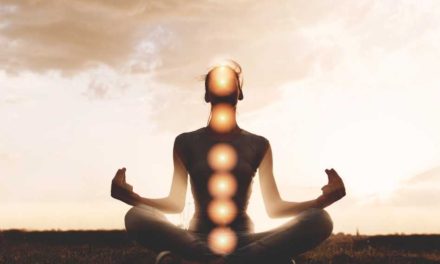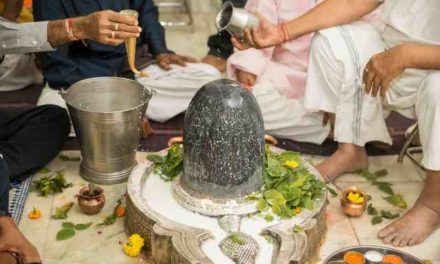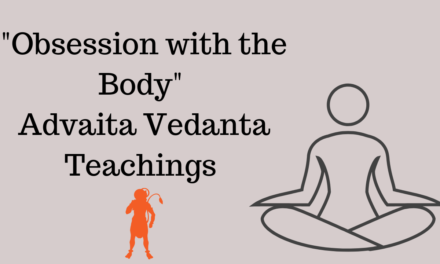“Rama Rama Rama Ram Ram Ram”
In Indian mythology, Hanuman is one of many deities, as a monkey child of the Wind Deity, the legendary texts talk of him as having immense power, sharp intelligence, and supremacy over the Vedas and other learning divisions. He is also an undisputed devotee of Rama, the epic Ramayana’s character, and has the power to take on any shape he wants.
Hanuman is a recurrent character in the Ramayana panels and motifs that adorn the temples constructed in India over the centuries. With his favorite firearm, the mace, he is most frequently portrayed. He is often sometimes represented as soaring through the sky, keeping up the mountain of herbs on one side and a mace on Vedanta on the other.
Hanuman’s role in the Ramayana
Sita, the queen of prince Rama, was kidnapped by Ravana, a demon. While Ravana held Sita in his airborne chariot, Sita saw some monkeys atop a mountain and put her ornaments down, thinking that monkeys with ornaments would draw the attention of her husband Rama, who would certainly be searching for her in the same area.
Of these four monkeys, Hanuman was one. This community of monkeys was instrumental in presenting crucial details regarding Sita to Rama. He helped him construct a bridge over the oceans, merging with a monkey force that invaded the fortress of the demon and rescued Sita.
Hanuman’s position in the Rama-Ravana war is enormous. He is the one who travels through the oceans (he’s the child of Wind), locates the precise location where Sita is trapped, and returns this knowledge to Rama. Though he sets the entire place on fire inside the demon fort on his hunt for Sita and informs Ravana of an impending assault unless Sita is returned unharmed.
During the war between Rama and Ravana, Hanuman not only destroys several generals of demons but brings Rama’s brother back to existence as well. What is it that he does? Okay, it so happens that Rama’s brother is mortally wounded by Ravana’s friend, and the monkey-army-physicist thinks the only items that can save the young prince’s life are four different herbs that develop on the slopes of the Himalayas.
The pick, right? The war is raging in Lanka across the country’s southernmost edge, while the Himalayas are far north, and in the next few hours, before the dawn of the new day, the herbs are required.
Hanuman leaps into the air, travels at blinding speed northward, and alights above the Himalayas. This is where things continue to get confusing: the monkey-physicist had claimed medication herbs are shining under their own light and so it would be easy to find them. However, what Hanuman sees is a whole mountain aglow with all kinds of plants, each emanating its own peculiar light.
Hanuman, unable to recognize the exact four herbs identified by the physician, uproots the whole mountain and takes it back to the battlefield. The veterinarian gets his medicines, the near-dead prince gets his life back, and the influence of the mountain teeming with a thousand fragrant herbs is so intense that many battle-fallen monkeys are often cured only by inhaling the medicine-scented mountain air.
Throughout the epic, Hanuman is portrayed as one of the sweetest of features, with flawless grammar, graceful expression, and faultless etiquette. Throughout the three Vedas, he’s also defined as intelligent. He inherits his strength and pace from his dad, the Wind God. He’s even a shapeshifter who can raise his body size and decrease at will. And the Hanuman Chalisa is chanted daily by his devotees to remove difficulties from their lives.
Why Hanuman should be worshipped on Tuesdays
According to legend, Lord Hanuman is an avatar of Lord Shiva. Hanuman was born on a Tuesday during the Hindu month of Chaitra, the son of Kesari and Anjana. As a result, on Tuesdays, worshippers worship Sri Hanuman.
According to the Gregorian calendar, Hanuman Jayanti falls in March or April. Additionally, Tuesdays are referred to in Hindi as Mangalvar, which means fortunate day. Hanuman is also known as Chiranjeevi, which means he is eternal. He continues to exist in some way or another until now.
Hanuman, who is more venerated as Shri Rama’s devoted disciple, is renowned for his strength and wisdom. He is also known as Pavan Putra since the God of the winds brought Lord Shiva’s blessings and informed Mata Anjana of his birth.
Hanuman, also known as Bajrangbali, inspires millions of people today with his unwavering devotion to his Lord (Rama). He is the personification of unselfish service and dedication. There can be no one else quite like him. Here is a little tale that demonstrates his unflinching love for Shri Rama.
Sita returned to Ayodhya with her husband, Rama, after the fight against Ravana. They presented a gesture of appreciation to everyone who participated in the struggle from their side. Mata Sita presented the pearl necklace she was wearing to Hanuman as a token of her gratitude for his efforts. Hanuman took it politely then promptly tore it.
Everyone who watched Hanuman’s deed was perplexed as to why he wrecked Sita’s gift. However, his response left the audience stunned. He said that regardless of how valuable things are, they are useless to him without Shri Rama. Later, to demonstrate his point, he tore his chest apart with his own hands, revealing a gorgeous reflection of his Lord and spouse.
While Hanuman may be worshiped on any day of the week, Tuesdays are considered more fortunate. As a result, many visit Hanuman temples on Tuesdays. By worshiping him, one may gain prosperity, tranquility, happiness, strength, and bravery.
Hanuman’s role in the Mahabharata
The Mahabharat is an epic about two factions of a throne-war ringing dynasty. Some of the rulers in the Mahabharat are indeed a son of the Wind Lord, and Hanuman’s is to him making his only presence in this story. This boy, called Bhima, was just as strong as the sky and had once wandered into a huge banana grove, which he unexpectedly killed. As he was cutting down the fruit and rooting up the leaves, he noticed an old monkey dozing by the side of the lane, his tail lying across the grove.
Bhima told the monkey to push his tail away; the monkey opened his eyes and said it was very frail and he would be thankful if the prince could be patient enough to raise it away. Bhima, not inclined to caution or interactions with lesser creatures, bent on picking up the monkey by his neck, with the intention of hurling it through the banana leaves.
He couldn’t lift even a tail whisker, though, to his dismay, try as he could. It transpired the monkey was none other than Hanuman, the most strong being on earth. “Power should not be trifled with; nor should it be false” or similar-effect terms were what Hanuman had said to the chastened Bhima.
Hanuman chose to stay on the banner of Arjuna’s younger brother Bhima’s chariot, as a show of love for Bhima. In the final awful Mahabharat battle, the scream that would emanate from the ape symbol on his flagstaff, pushing terror into his enemies ‘souls, intensified Arjuna’s war cries.
Significance of Hanuman
Symbolically, Lord Hanuman provides for absolute love, full submission, and the absence of ego or of the lower self. The character shows us what we will achieve with our lives by being true devotees, aligning with positive powers, serving the poor, self-control, absolute confidence, and complete surrender.
Being a famous fighter of the vanara tribe, he symbolically reflects man’s lower self or animal (Neanderthal) existence, which, when perfected and converted, is balanced in God and follows the divine cause in complete surrender, much as in Hanuman’s case did.
As Vayu’s wife, he symbolically represents the subtle structures, namely the air body, the mind-body, and the body of intellect. The air body, in our heads, is responsible for the flow of life energy or prana. This is extremely powerful among individuals who lead ethically pure and celibate lives, committing austerities that Anjaneya was mostly popular for.
Hanuman as a devotee reflects the inner body, which is made up of the waves of awareness that exist in our Chitta or consciousness. It’s responsible for our creativity, flying astrally, and experiencing dreaming.
The body of knowledge is comprised of buddhi or rational wisdom and is deemed one of Nature’s greatest tattvas or values. It is claimed that our Buddhi is a clear manifestation of divine wisdom. This is essential for our capacity to make choices, for critical thought, and for consciousness.
Hanuman reflects all these powers, as an epitome of goodness and divine strength. In this essay, we would explore Hanuman’s metaphysical importance as the abstract entity reflecting the human spirit and its various attributes and forces.
The mind becomes fickle (like a monkey) and runs from place to location, running after things, engaged in endless behaviors that are disrupting the place’s calm. Like Hanuman, the mind can also go where it wishes. It will float through the air, cross the continents and the planets with the pace of thinking in a second, and touch any and everything it needs mentally.
This can even extend or compact itself (again like Hanuman) at will. It stays unpredictable and mischievous, creating much of the chaos in the individual’s environment, as long as it remains under the influence of mere animal instincts and the meaning behaviors.
But until it surrenders to the inner self and is completely and unconditionally committed to it, it achieves supernatural forces and accomplishes stupendous feats like Hanuman, functioning for the holy cause allowing the lower self (Sita) and the Spirit (Rama) to come together and merge.
It also lays a solid basis for the Kingdom of God (Ramarajya) to be formed within the body by destroying all the bad thoughts with its determination. Hanuman is therefore symbolically the concept of consciousness that is ever submerged in God’s thought and fully given to Him.
That’s not the only definition open to Hanuman, however. Named “Hanuman,” he is certainly (anuman) the one about the life of Rama (God). As Anjani Putra, he is the one who accidentally comes into this world but ascends to the greater heights of spiritual evolution through his efforts.
As Vayuputra he is the air body in us and will allow the lower self (Sita) to reunite with its true friend, the inner soul (Rama) that is lost to ignorance. As Veeranjaneya, to many a tentative spirit, he is the source of bravery and confidence.
As Bhajarangbali, he is high in both physical and devotional power. He is an abundance of values, and a true sincere mate. God respects man’s ascetic virtues, for only those who are isolated and spiritually separated from the luxuries of their bodies’ life and wants will truly rely on the spiritual and achieve Him.
In the macrocosm, Rama portrays his devotee, the human self, the Supreme God, and Hanuman. Rama reflects the embodied Ego inside the microcosm of the embodied Reality (jiva), which is trapped in the process of births and losses (Samsara). Sita reflects the body structure (Kshetra) and the actual Self or Mind.
Through its ten hands, Ravana depicts the ego through ten senses that have slipped into evil ways. Hanuman stands for, air. As ego and the senses take the mind and body away and abuse them, the embodied spirit restrains the senses with the aid of air, silences the ego, regains possession of mind and body, and stabilizes them in God’s contemplation.
So in several ways, Hanuman reflects a number of virtues. He is known as Superman, the ideal hero, the body of wisdom (jnana guna Sagara) of individuals, the eternal (Chiranjeevi), the floating human (vanara), and the animal existence.
He is an outstanding illustration of sincere commitment and absolute surrender. He also symbolizes the tale of the animal man among us, who will purify himself and achieve salvation through the road of dedication and service to God.
DISCLOSURE: This content contains affiliate links, which means that if you click on one of the product links and make a purchase, I’ll receive a small commission. Which helps me support the channel to make quality content and recommend products for you.





